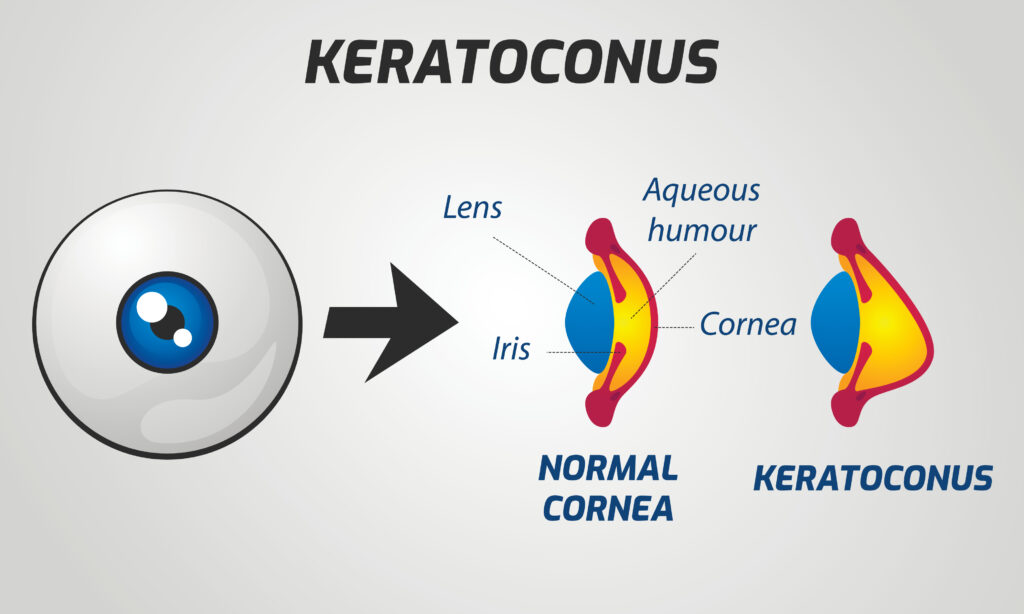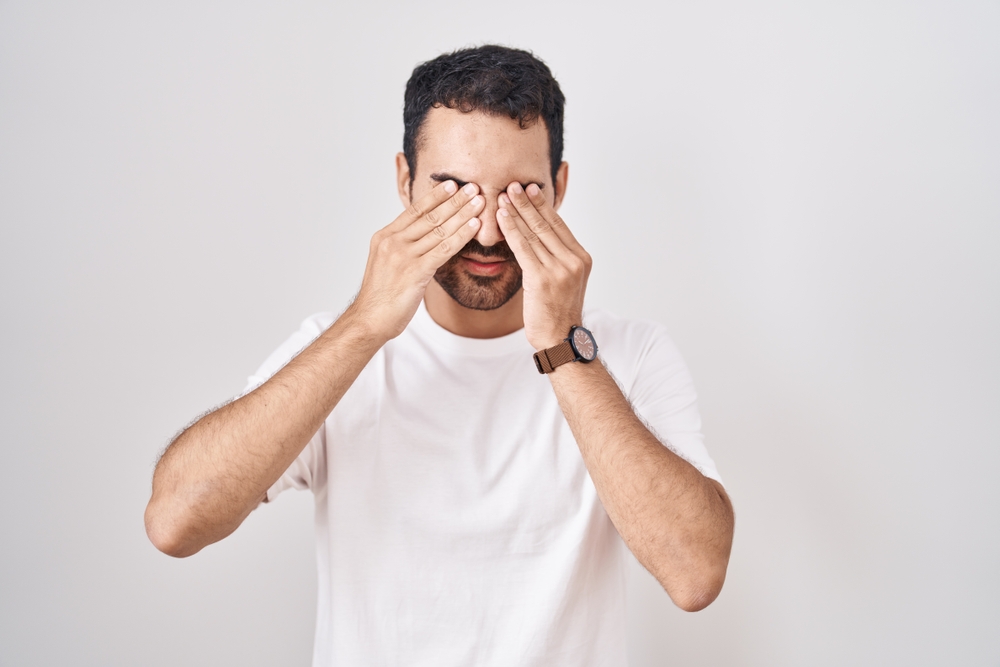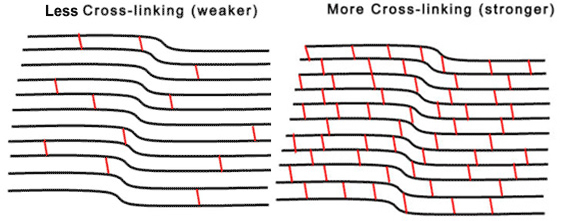Posted by: Clear Advantage in Featured on June 27, 2024
Keratoconus is a progressive eye condition that causes worsening vision. It affects around 1 in 2,000 people, but some factors put you at higher risk for keratoconus.
Unlike many common eye conditions, it’s more common in younger adults. While there is no cure for keratoconus, there are treatments that can slow the progress of the condition and help you see better.
These treatments are most effective in the early stages, making it essential to receive an early diagnosis of keratoconus when possible. An excellent way to ensure keratoconus is diagnosed early is to be aware of the eye condition and to know if you’re at risk of developing it.
Keep reading to learn who is most likely to develop keratoconus!
What is Keratoconus?

Keratoconus occurs when the cornea, the clear front part of the eye, begins to thin. This gradually causes the cornea to bulge, becoming more conical in shape.
This is where the name of the disease comes from—the prefix “kerato” means cornea, and “conus” means cone-like. The purpose of the cornea is to refract the light that passes through your eye.
When it’s misshapen, light doesn’t refract correctly, so images appear blurry. This causes refractive errors like nearsightedness, farsightedness, and astigmatism.
However, these refractive errors typically result from tiny irregularities on the cornea. Keratoconus causes more extreme distortion, especially as the eye condition progresses.
It can even progress where visual aids like glasses and contact lenses can no longer correct your vision.
What are the Risk Factors of Keratoconus?
The exact cause of keratoconus is unknown, but several of its associated risk factors have been identified. One of the most significant risk factors is age.
Keratoconus typically begins developing in the late teens or early twenties and often progresses until the mid-30s. It’s rare for the condition to first appear after age 30. You’ll likely develop it later if you have not shown any signs of keratoconus by your early 30s.

Other factors can increase your risk of developing keratoconus, including:
- Having Ehlers-Danlos (EDS), Marfan’s Syndrome, Down’s Syndrome, retinitis pigmentosa, hay fever, or asthma
- Having a family history of keratoconus
- Frequently and vigorously rubbing your eyes
If you’re at risk for keratoconus, you should see your eye doctor at Clear Advantage Vision Correction Center regularly. The condition progresses very slowly, so it’s often hard to notice if you have it in its early stages.
Regularly scheduling eye exams with your ophthalmologist is critical to ensure a timely diagnosis and appropriate treatment.
How Do You Know If You Have Keratoconus?
The only way to honestly know if you have keratoconus is to have a comprehensive eye exam with your eye doctor. You should have eye exams regularly based on your risk for the condition, which you can talk to your eye doctor about to find out just how frequently you need an eye exam.
However, a few symptoms may indicate that you have keratoconus. These symptoms include:
- Blurred vision
- Light sensitivity
- Vision that worsens or becomes cloudy suddenly
If you experience these symptoms, see your eye doctor as soon as possible. Even if you don’t have keratoconus, you may have another eye condition that your eye doctor can diagnose and treat.
Keratoconus Treatment
There are several ways to treat keratoconus, both to help you determine whether you have the condition and to slow its progression. In extreme cases, a corneal transplant may be necessary to restore lost vision.
Visual Aids
Glasses and contact lenses can help correct visual distortion caused by keratoconus up until a point. However, it can develop to the point where visual aids are no longer effective.
However, before that point, specialty contact lenses can correct your vision. If soft contact lenses can no longer correct your vision, your eye doctor may prescribe hybrid or hard lenses, which can correct your vision to a higher degree.
They may also prescribe scleral lenses. Scleral lenses cover the white part of the eye, as well as the pupil and iris. Their dome-like shape can sometimes more easily cover a bulging cornea due to keratoconus.
Keep in mind that these visual aids can help you see if you have keratoconus, but they won’t stop the condition’s progress. However, there is a treatment that can prevent the cornea from thinning and bulging further.
Corneal Cross-Linking

Corneal cross-linking is a non-surgical treatment for keratoconus that slows and can even halt its progression. It involves putting riboflavin drops into the eye and activating those drops with UV light.
This process strengthens the cornea by creating more bonds between the collagen fibers so it can’t thin out and will no longer bulge out, improving your vision.
Surgery
Unique ring-shaped implants may be inserted into your cornea to flatten it out. Flattening the cornea can help contact lenses fit better.
The implants don’t prevent further corneal bulging, but your ophthalmologist may choose to combine implants with corneal cross-linking.
When your cornea bulges beyond what lenses can correct, the last treatment that can help is a corneal transplant. Depending on the severity of the condition, a corneal transplant may involve replacing some or all of your cornea.
Do you think you could have keratoconus? Learn more by requesting an appointment at Clear Advantage Vision Correction Center in Portsmouth, NH, today!






